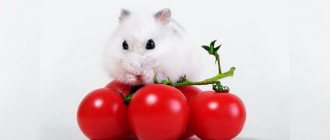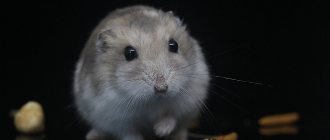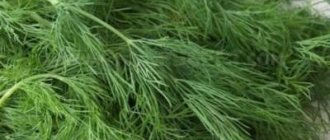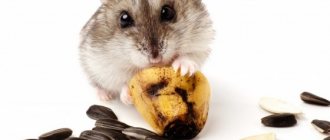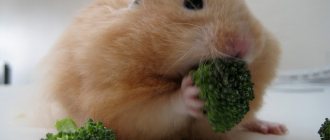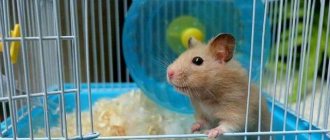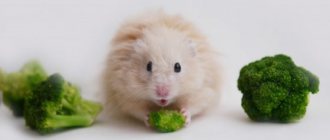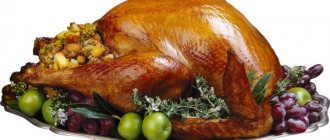Can hamsters eat nuts?
The diet of any pet should include a balance of food that it could receive in natural conditions. In nature, there is a wide variety of nuts depending on the area, and hamsters enjoy them and make winter reserves.
Walnuts and pine nuts, cashews, peanuts and hazelnuts are guaranteed to delight the animal. But in home conditions, a bowl filled with a hearty treat can lead to disastrous consequences - after all, the high content of fat and calories in a healthy product leads to excess weight and, as a result, pathologies of internal organs.
The stamina of pets is greatly reduced, so hamsters can eat nuts, but not any and only in limited quantities.
Some varieties should be completely excluded from the diet. Nut kernels are great if your goal is to make friends with the new inhabitant of the house. For this purpose, treat the hamster with a quarter of a walnut from an open palm. If the baby gets scared and refuses the treat for the first time, leave the treat in the cage, the hamster will eat it on its own, then try again the next day.
Important! Delicious nuts can be used as training rewards. After a correctly performed trick, offer a quarter of a nut to reinforce the association of training with the treat.
Basic nutrition of the Djungarian hamster
In nature, the Djungarian hamster's diet consists mainly of seeds and cereals. Therefore, it is reasonable to feed the dwarf at home according to the same principle.
The ideal option is to feed ready-made food for Djungarian hamsters. All the necessary grains, seeds, and dried herbs are already mixed there. Often the manufacturer enriches the feed with minerals, trace elements and vitamins.
This mixture can be given to dzhungarika constantly, periodically adding fresh vegetables, fruits and berries (in season), plus protein (more on that below). But if for some reason you cannot feed ready-made food, then here is a detailed video on the topic “how to prepare food yourself.”
What are the benefits of nuts in a hamster's diet?
The kernels are so nutritious that even a small piece can quickly satisfy your hunger. In addition, any nuts contain a lot of useful components for your pet: fully digestible protein of plant origin (at least 35%), saturated oils (over 50%), vital vitamins and minerals.
The complex content of substances necessary for the health of the animal is quantitatively superior to the best feed mixtures and includes the following elements:
- vitamins B1, B2, E, D;
- protein;
- starch;
- gluten acid;
- pantothenic acid;
- potassium, calcium, phosphorus, iodine, iron, magnesium, zinc, selenium;
- l-arginine;
- flavonoids;
- saponins;
- tryptophan.
Did you know? Many people make the mistake of imagining the hamster as a good-natured bumpkin. Most individuals in the wild are aggressive and lead a solitary lifestyle, without contact with their fellow tribesmen.
Small rodents eat hard foods, including nuts, to wear down their teeth, which reduces their salivation. In addition to improving intestinal motility, the functioning of the heart muscle and the cardiovascular system as a whole, rich saturation with nutrients promotes rapid growth and proper development of cubs, helps pregnant women get the necessary nutrition, increases lactation in lactating females and prolongs the life of hamsters.
How to feed a Djungarian hamster
How many times a day should you feed the animal? Djungarians are nocturnal (like other hamsters), so the main meal should be in the evening. You can feed food only once a day, but it wouldn’t be a mistake to feed it twice (in this case, let’s eat 70% of the daily amount in the evening, and 30% in the morning). This is not done for gorging before bed, but so that during the day, when the animal periodically wakes up, it has something to eat - the dwarf has a very fast metabolism (an eternally hungry hamster).
An adult Djungarian hamster only needs a tablespoon of food per day (with a small heap). Even if the food quickly disappears from the bowl, this is not a reason to feed more: most likely, your pet took everything that it didn’t eat into the pantry in order to “hamster” it later. It is his instinct to stock up.
Don't forget to promptly remove leftover perishable foods, otherwise they will begin to rot in the pantry.
Place the bowl itself in the house as far as possible from the toilet (the hamster will determine where he will have a toilet himself, so it will not be possible to designate places for feeding and relief in advance).
What nuts can you feed hamsters?
There is a list of permitted types of nuts, which has been tested among professional breeders and furry lovers. Among all the abundance of nuts, they recommend limiting yourself to raw, peeled kernels, which are guaranteed not to harm the hamster.
Important! The total amount of various treats in the form of nuts, seeds, and fruits should be up to 10% of the hamster’s total diet.
This includes:
- raw peanuts, the amount of which should be limited to half a peanut twice or thrice a week for large breeds and one portion per week for small breeds;
- walnut, the large kernels of which hamsters love very much and often try to beg for more. But you cannot follow their lead - for small breeds, exceeding the portion will cause rapid obesity and diseases that will hasten death. Give half a nut once a week to small breeds and twice a month if the hamster is large;
- pine nuts, which are regarded by hamsters as a tasty delicacy. But overeating can provoke intestinal and liver pathologies. Do not overfeed large breed hamsters, such as Syrian, in quantities exceeding 3-4 pcs. per week, and stop at 1-2 pieces. with a two-week break if you are the owner of a representative of miniature breeds such as the Djungarian;
- hazelnuts, which are good for diversifying your pet’s protein menu. At the same time, keep in mind that a high fat content leads to instant weight gain, so limit yourself to half a kernel, divided into 2-3 doses per day, for large individuals and a quarter for babies. Offer treats no more than once a week so as not to overfeed your pet;
- cashew, the kernels of which are indicated for skin diseases that occur due to vitamin E deficiency. This fruit improves the quality of wool and has antibacterial, tonic and anti-inflammatory effects. For large breeds, the amount of treat does not exceed half a nut per day; for small breeds, give the same amount twice a week;
- macadamia, which is rarely found in pet stores. In crushed form, it is included in high-quality food for rodents. The presence of unique oils will have a beneficial effect on the coat, and the increased calcium content will help strengthen the bone system. Divide the whole nut into halves, which can be fed to large breeds in two doses per day. For small breeds, cut the serving in half and don't feed them more than once every 7-14 days;
- pecan, an equally exotic guest on the shelves. However, hamsters always like it. Dose these nuts in the same way as walnuts - give a half once a week to large breeds and a quarter to miniature breeds every 2 weeks;
- pistachios, which are controversial as a dietary requirement due to potential harm, but are nevertheless loved by hamsters. Check with your veterinarian about the advisability of introducing these nuts into your home diet. If he approves of your choice, give a quarter to the Syrians twice a month and 1/8 to the Dzungarians with the same break.
The benefits and harms of parsley for a hamster
- It contains a lot of fatty oils, vitamins C, and iron.
- There is no sugar, but there is fructose and glucose.
- It can be served fresh or frozen.
- It is easily accessible.
- The immune system develops and grows thanks to folic acid, which is found in parsley.
- The functioning of the digestive organs is normalized, so it is often given to adult hamsters.
- The animals' bodies are enriched with beneficial microflora.
- Collagen will increase immunity, speed up regenerative processes, and rodents will be much less likely to suffer from all sorts of infections.
- Veterinarians have noticed that in the second and third years of life, hamsters often suffer from arthritis, so they are recommended to give the plant as a preventive measure. Especially if the hamster is inactive.
- Thanks to parsley, the functioning of the gastrointestinal tract improves.
- There is more ascorbic acid in the plant than is found in lemon, so it is given to animals in the fall, and also in the spring as a cold remedy.
- Recommended for strengthening blood vessels.
- Cystitis, pyelonephritis and diseases of the genitourinary system also overtake the animal, but parsley can help it cope with viruses.
- Thanks to its diuretic effect, it can remove not only toxins, but also radicals and salts.
- Breast milk is made better by parsley, more nutritious. Therefore, veterinarians recommend it for lactating females, but only a little.
- Metabolic processes are much improved, pain is reduced.
- Greens have a positive effect on the process of cell formation.
How harmful it is:
You can’t give a lot to nursing mothers, as babies will experience overstimulation of the nervous system.
What nuts should you not include in your diet?
Some species pose a direct threat to hamster health and can damage internal organs, including death.
Did you know? Hamsters are capable of covering long distances. In the limited conditions of a cage on a wheel, a hamster can run up to 10 km in just one night.
The list of toxic and prohibited products for animals includes the following:
- almonds, a high dose of cyanide in which will kill the baby. For the same reason, exclude apricot, plum, cherry, and cherry kernels from your diet;
- Brazil nut, which is a lower-tasting relative of macadamia, cashew and almond. The high fat content does not allow the normal digestion of food that is so heavy for a delicate stomach;
- Acorns and chestnuts are undesirable due to the large amount of tannins, protein, starch, sugar, and oil that is too fatty for the liver. The combination of these factors often leads to poisoning;
- cashews in large quantities, which are contraindicated for small breeds and babies. Increased fat content reduces digestibility and harms the digestive system;
- peanuts and pistachios after heat treatment with the addition of salt, flavorings, and flavor enhancers. Such nuts are strictly prohibited as dietary supplements. Neglecting this rule always leads to dangerous health consequences and a poor prognosis;
- peanuts or cashews, ground into nut butter and, what is disproportionately worse, added to butter. A huge amount of sugar and fat will kill the liver, but before that it will clog the cheek pouches due to stickiness;
- any unshelled nuts in the shell, the fragments of which will damage the teeth, digestive tract or injure the oral mucosa.
Basic nutrition of the Djungarian hamster
In nature, the Djungarian hamster's diet consists mainly of seeds and cereals. Therefore, it is reasonable to feed the dwarf at home according to the same principle.
The ideal option is to feed ready-made food for Djungarian hamsters. All the necessary grains, seeds, and dried herbs are already mixed there. Often the manufacturer enriches the feed with minerals, trace elements and vitamins.
This mixture can be given to dzhungarika constantly, periodically adding fresh vegetables, fruits and berries (in season), plus protein (more on that below). But if for some reason you cannot feed ready-made food, then here is a detailed video on the topic “how to prepare food yourself.”
How to feed a Djungarian hamster
How many times a day should you feed the animal? Djungarians are nocturnal (like other hamsters), so the main meal should be in the evening. You can feed food only once a day, but it wouldn’t be a mistake to feed it twice (in this case, let’s eat 70% of the daily amount in the evening, and 30% in the morning). This is not done for gorging before bed, but so that during the day, when the animal periodically wakes up, it has something to eat - the dwarf has a very fast metabolism (an eternally hungry hamster).
An adult Djungarian hamster only needs a tablespoon of food per day (with a small heap). Even if the food quickly disappears from the bowl, this is not a reason to feed more: most likely, your pet took everything that it didn’t eat into the pantry in order to “hamster” it later. It is his instinct to stock up.
Don't forget to promptly remove leftover perishable foods, otherwise they will begin to rot in the pantry.
Place the bowl itself in the house as far as possible from the toilet (the hamster will determine where he will have a toilet himself, so it will not be possible to designate places for feeding and relief in advance).


